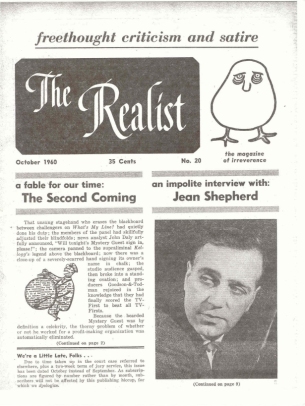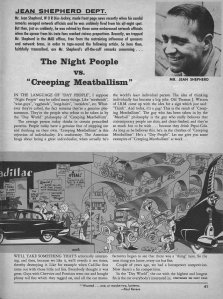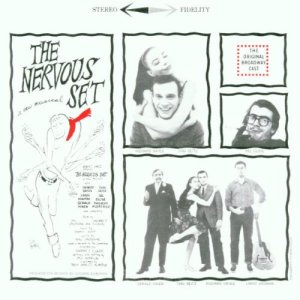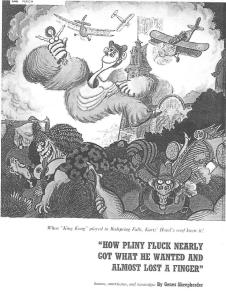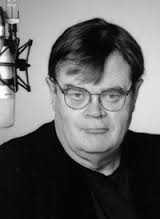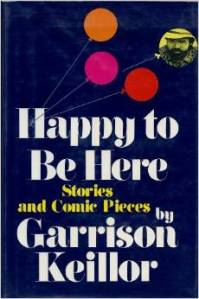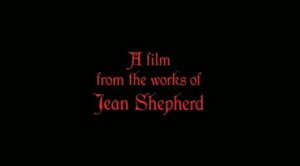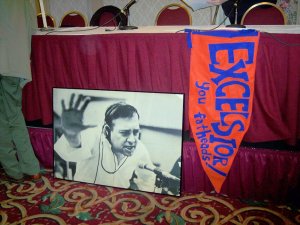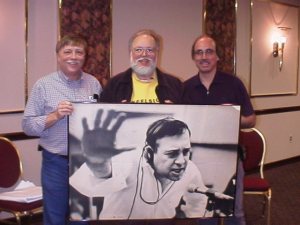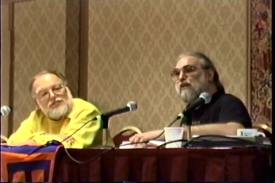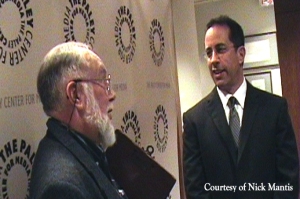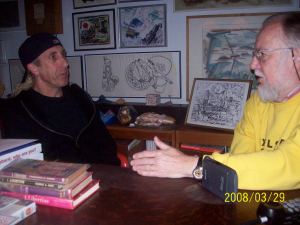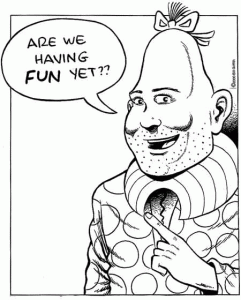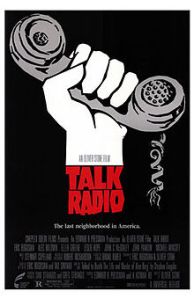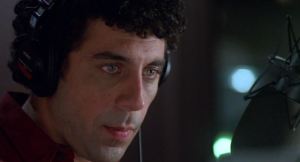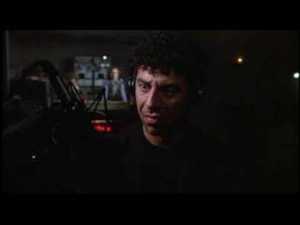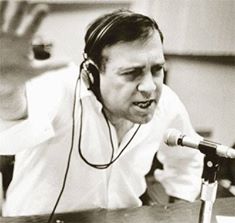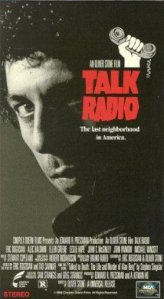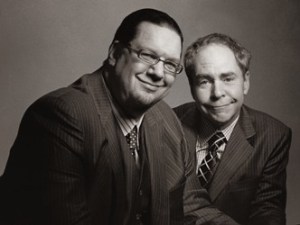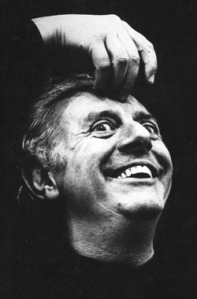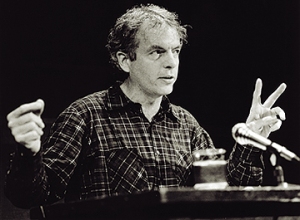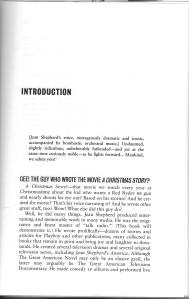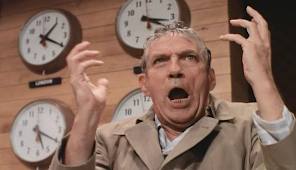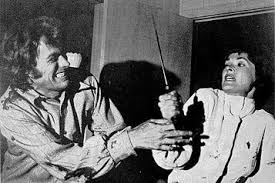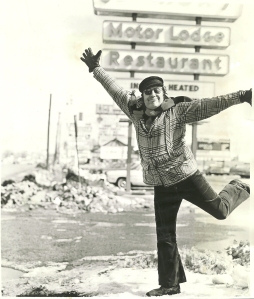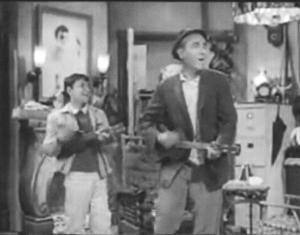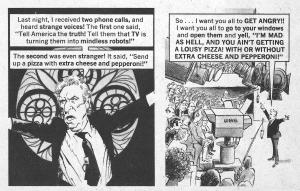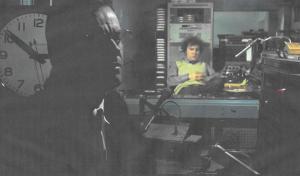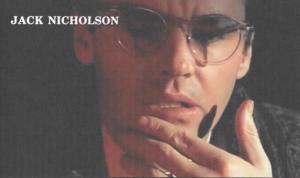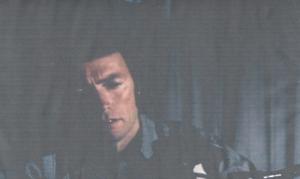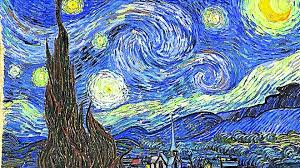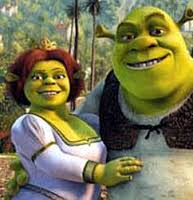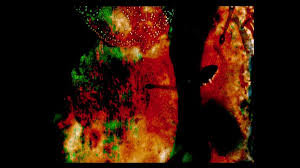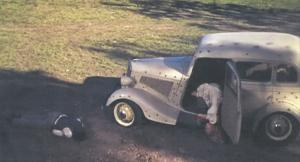Home » Influence on others (Page 2)
Category Archives: Influence on others
JEAN SHEPHERD Night People and “The Nervous Set.”
HIP AND “NIGHT PEOPLE”
It appears from circumstantial evidence of his early activities in New York, that Jean Shepherd was the essence of “hip.” With the change to shorter programs earlier in the evening, he probably didn’t seem as hip except in the minds of what was becoming his predominantly younger audience. He remained extremely intelligent, knowledgeable, entertaining, and sometimes arcane, but not what the cutting edge of hip would still call hip. (Don’t get the impression that I was ever hip—the most I can claim is that because of Shepherd’s recommendations I was an early and long-time subscriber to The Village Voice and The Realist.
As a member of the “predominantly younger audience,”
I found Shepherd hip then, and, in a modified way, I still do.)
Yes, Shepherd was hip, so he must have been aware of and curious about the nature of a Broadway musical of 1959, The Nervous Set. Based on an autobiographical novel by Jay Landesman, with lyrics by his wife Fran Landesman, it seems a witty, cynical send-up of both the hip and the square. With characters said to portray Jack Kerouac and Allen Ginsberg among others, set in New York in 1950, it’s described as “the intensely cool, hopelessly hip jazz musical about the Beat Generation,” and “a loving evocation of the Beat Generation, with all its warts and contradictions,…”
Connections to Shepherd include his affinity for the Beats, his friend Jules Feiffer’s promotional artwork for the play, and more directly, by one of the songs. Titled “Night People,” it repeats Shepherd’s “night people” phrase, which he’d used at about four years before the play opened. The phrase had been in the air since Shepherd described characteristics of people who were awake in the middle of the night, and who were by implication, his early hip radio listeners. [Actress Lois Nettleton, eventually Shep’s third wife, was one of those early listeners.] Although I’ve suggested the following before, I’ve never fully articulated it. My sense of Shepherd’s use goes something like this:
1) In early 1956, when he broadcast nightly from 1:00 to 5:30 A. M., he must have begun referring to those who were awake late at night, and many of whom listened to his program, as “night people,” giving the sense that they were a special breed who, through inclination, occupation, or other imperative, felt more comfortable in the dark, less-inhabited hours, when they could be more open to their less-conforming temperaments. He may have put it a bit too strongly, specifically referring to a “wild tossing of the soul and brooding.” Yet even these tendencies would have been found among the rarified and embattled souls whose affinity toward Shepherd’s style and tone led them to cling to his word as balm and sustenance. Ah, those lucky few who heard him then!
2) Then came the firing/rehiring of September 1956, when the renown he thus achieved and the Sunday evening hour, promoted a larger audience, including an intelligent and perceptive majority of them maybe not brooding with a wild tossing of their souls, yet (ready for a pun here?) attuned to him and more likely seated at the kitchen table, homework done, listening on a maroon plastic Zenith AM/FM radio with its big, simulated-gold dial (See my EYF! page 18).
With this audience, he must have seen the need to expand the meaning of “night people,” so in part he promoted an aspect of it, a distaste for what he called the “creeping meatballism” of the mass culture’s conformist and consumer-oriented pressures. Near the beginning of the earlier-in-the-evening broadcasts (beginning in September, 1956), his article, “The Night People vs. ‘Creeping Meatballism’” appeared April 1957 in that phenomenon of kid-revolt against the conventional culture and consumerism, Mad Magazine.
In the article, he referred to Night People as “…people who refuse to be taken in by the ‘Day World’ philosophy of ‘Creeping Meatballism.’” For “day people,” read “conformists.” At the end of the article, he gathers all perceptive Mad readers and potential listeners into his arms, commenting that no matter how consumer-addicted, one is still an individual, and “every one of us, I don’t care who he is, has a certain amount of ‘Night People’ in him. And once a person starts thinking and laughing at the culture,…he can never go back!” Indeed, who of us ever went back?
3) By the time he began broadcasting earlier in the evening, although he may have continued to suggest that his listeners were “Night People,” he didn’t use the term as originally defined but left its understanding open to wider interpretation. I asked Shepherd fans about his post-overnight usage and reports suggest that later acolytes were not referred to as afflicted with a night person’s wild tossings. Personally, despite a bit of sleep apnea with mild limb movement, I’ve never tossed wildly.
Without being able to listen to any–much less all–of Shepherd’s overnight broadcasts, we can’t know the whole truth, but in numerous articles the media promoted Shepherd’s use of the term. An interviewer in 1964: “You referred to your audience as ‘night people.’” Response: “Well, not really. That’s not as simple as it sounds. In fact the phrase ‘night people’ came out of that show that I did. I never called my audience ‘night people.’”
In response to my 2006 query by email to The Nervous Set’s author, Jay Landesman, he neither confirmed nor denied a connection between Shepherd’s use of the term and the song, but merely promoted to me an expected new production insipidly re-titled Fun Life. (It never happened.)
LP recording. Note Feiffer drawing on left.
The song can’t be interpreted as a positive comment on what Shepherd meant by the phrase. The ironic and pompous orchestration and the original cast’s ironically smug rendition make it a two-edged sword—putting down both day-people blandness along with the play’s idea of night people who have a superficial enjoyment of such stuff as neon lights. Certainly the lyrics of the song don’t evoke what Shepherd felt were serious, highly intelligent, and sensitive people seeking solace, if not fulfillment, in the night. The song refers to the night people as “restless neon light people, the bright people.” Sneering at “sober little clay” day people because they never have time to play, the song ends with “We always run before the sun can spoil our fun. Because we’re night people. Night people. Night people.” Listen to it here: https://www.youtube.com/watch?v=EsKc8i8yOx4
The impression is of superficial, late-night party animals. Neon lights and the lyric’s tinsel stars have nothing to do with the Beats or Shepherd’s term. We know Shepherd disapproved of superficial uses of his phrase, as indicated in the broadcast segment below. He must have been incensed at the distortion of his idea and the use of the term, and he might well have been referring, at least in part, to the play here—his comment occurs within about a year of the play’s opening:
And you know, incidentally, it has bothered me so much what has happened to the term “night people,” which I have always regretted coining. This was a term which I coined, and I will stand accused and guilty of it. And I notice that people have taken it up and used it to cover all sorts of sins of omission and commission. It has nothing to do with Walter Winchell’s world of bus boys—nothing to do with Walter Winchell’s world and Damon Runyon’s world of cab drivers. This is not the night people that I’m referring to.
I’m talking about people with that wild tossing in the soul that somehow makes them stay up till three o’clock in the morning and brood. (June 4, 1960)
________________________________________
JEAN SHEPHERD–Playboy & Punch, and Keillor
A recently discovered parody of Playboy from an issue of Punch in 1971 contains only the beginnings of a story, “How Pliny Fluck Nearly Got What He Wanted and Almost Lost a Finger,” tagged as “humus, americana, and naustalgia by Genes Sheepherder. “ That a humor magazine published in England chose to include Shepherd’s work suggests that he must have had at least some degree of renown there. The opening paragraph:
“Crash! CRUNCH! KAVOOM! BAM!” sang the scissors in Pliny Fluck’s freckled fingers. It was Saturday afternoon in Bedspring Falls and all the boys were hanging around Pliny Fluck’s Barber Tonsorium, Pool Hall and Weltschmerzerie, swapping dirty stories and baseball cards. Except Marv Kluntsch and Jeb Phrigg who were saving time by swapping dirty baseball stories.
There are not many parodies of Shep (is there more than one?)–and not too many attempts to analyze his writing or his style except for Professor Quentin Schultz, who has taught courses in Shep. (A student cheat-essay for sale noted below may be another “parody.”) Some might think that Garrison Keillor must have been influenced and others would say that Keillor goes his own way. Probably most Shepherd fans would disparage Keillor as inferior. There was a moment, however, when Shep himself admired the early Garrison Keillor. See below.
¡
A Website containing thousands of high-school-level essays for sale to student cheats gives, as an example, an essay illustrating comparison-and-contrast titled “Gene Shepard’s In God We Trust, All Others Pay Cash vs. The Christmas Story.” Eagle-eyed and even bleary-eyed Shep fans will note that his first and last names are both misspelled, and the movie is incorrectly titled.
¡
HAPPY TO BE HERE
— A Garrison Keillor ANECDOTE—
Thoughts on another literary matter. According to people I’ve interviewed, Jean Shepherd hated Garrison Keillor “with a passion,” and Keillor was “the person he was more embittered toward than anybody.” Obviously Shepherd envied the accolades Keillor got for his radio storytelling. But before all that happened, Shepherd wrote one of the blurbs for Keillor’s first book of stories, Happy to Be Here, published in 1981:
“I welcome Garrison Keillor to the ranks of a very endangered species.
Keillor makes you laugh, and that ain’t easy these days.”
Later on Shepherd seemed to feel that he had much cause to be embittered. He did not achieve the acknowledgments for his work that some of his peers he considered his inferiors got. His first and greatest love, radio, during the years of his most important broadcasting, did not have the capacity to allow him to achieve nationwide acclaim. (Not just school kids, damnit, but a wider listenership among literate adults.) Some of his later television and movie work did not even get produced, some did not turn out as well as he had expected, and he did not achieve the break-through popularity he wanted except for the later television re-broadcasting of his A Christmas Story. Most of the millions who love the movie are probably not even aware of who created and narrated it. Who reads those opening titles, anyway? Even if four of them refer to Shepherd’s important role in the film.
Irony is never far away in the world of Shep.
¡
(Once, just a couple of years ago, Garrison Keillor,
on a radio program devoted to important dates,
mentioned Shep in what must be recognized as a positive way.
I think it was his birthday.)
_______________________________________
JEAN SHEPHERD– Who’s Got the Juice?
A few years back, in regard to the world of Jean Shepherd,
someone asked, “Who’s got the juice?”
•
Regarding Jean Shepherd,
what are some major sources of knowledge and material?
[Above, my Shep poster and the banner
Jackie Lannin made for me]
•
I’d say that there are three major sources, each somewhat different from the others. In addition, with Nick Mantis making his Shep documentary, he is gathering additional material, which is making him another important player in the game. College professor Quentin Schultze, who, years ago, began teaching courses about Shepherd’s work, has only recently become more widely known as a Shep authority. Several other sources should also be noted. Internet sources of audios, etc. should include the brass figlagee: http://shepcast.blogspot.com and several others, and some YouTube videos. Major collectors such as Pete Delaney continue to supply important material. What follows is just what I consider the big three, noting the major areas of their contributions.
•
JIM CLAVIN: HISTORICAL REPOSITORY
Jim’s essential website for all things Shep is www.flicklives.com . Jim has been collecting and archiving Shepherd material for years, and those with Shepherd material often contact him to send him previously unknown material. He has amassed an incredible archive regarding all aspects of Shepherd’s life and work, plus listing other various sources. I could not have done much of my work regarding Shepherd without being able to make reference to Jim’s site.
Jim Clavin, eb, and Lou Miano– 3 Shep fans
•
MAX SCHMID: PROMOTION AND DISTRIBUTION
Max, as a WBAI FM broadcaster for many years, has promoted Shepherd however and whenever he can, including years of early Tuesday morning rebroadcasts of Shepherd programs. People with Shep audios and other material often contact him and deliver the goods to him. He organized and presented a session with him and me on Shep for an Old Time Radio convention–see photo below. He continues to rebroadcast Shep when he can, and he is a fine source of available audios and videos of much Shepherd material: www.sheptapes.com
•
EUGENE B. BERGMANN: INTERPRETATION AND ESSAYS
I’m the source of some of the earliest audios of Shepherd’s New York broadcasts (I recorded him from 1956 to about 1963). My Excelsior, You Fathead! The Art and Enigma of Jean Shepherd, containing an overview of his work and creativity was published by Applause Theatre and Cinema Books in March, 2005. My transcriptions and introductions to dozens of Shep army stories, Shep’s Army: Bummers, Blisters, and Boondoggles, was published by Opus Books in August, 2013. I’ve been interviewed numerous times for print articles, radio broadcasts, and once on CBS Television regarding these books and other Shepherd matters. I’ve also written and published a number of articles in various periodicals about Shep, including a foreword for Caseen Gaines’ A Christmas Story: Behind the Scenes of a Holiday Classic. I’ve published over 200 posts on my blog regarding many aspects of Shepherd’s life and works.
•
Other Shepherd enthusiasts continue to comment and help sustain his memory, and all of them are appreciated. To my delight, various well-known (and some lesser celebrated) people have also commented on the importance of Shepherd in their lives. Some I interviewed for my first book, and some, such as Jerry Seinfeld, Keith Olbermann, and Dee Snider, I’ve only subsequently become aware of as Shepherd fans. Even more recently, I found out that R. L. Stine (Goosebumps book-series author) and contemporary novelist Tom Wolfe, are also Shep fans.
eb and a well-known Shep fan
eb and a well-known Shep fan
[In foreground, four different editions of I, Libertine,
and on wall, an original Shep still life in ink on a paper towel.
____________________________________________
JEAN SHEPHERD & ZIPPY–10.16.1999
July 26, 1921-October 16, 1999
The strip above, a tribute to Jean Shepherd done soon after he died, is from “Zippy the Pinhead” by Bill Griffith. The original published strip, of January 9, 2000, is without color. (Click this colored one to enlarge.) This reproduction is from the Zippy website, showing the hand-colored version that can be bought (www.zippythepinhead.com). Griffith is a big fan of Shepherd’s and he gave free permission for me to reproduce its original black and white form in my Excelsior, You Fathead! It is a perfect ending for the series of illustrations in the book. My caption for it is: “….This strip testifies to the importance of Shepherd’s work for many creative people as well as for his legions of devoted fans, many of whom stayed awake listening, long after bedtime, captivated by Shepherd’s voice in the night.”
In the Internet site: http://www.comicbookresources.com/?page=article&id=18342, interviewed by Alex Dueben, Griffith says, “My comedy influences came from people like Lenny Bruce and Jean Shepherd. Also, I like to think of Harvey Kurzman [of Mad Magazine] as a humorist as much as a cartoonist. His ‘voice,’ his cadence, are still a big influence. And then there are my favorites from fifties TV: Phil Silvers (“Sgt. Bilko), Sid Caesar, Mel Brooks, Jonathan Winters, and especially Ernie Kovaks. Woody Allen, too. And that one-of-a-kind hipster, Lord Buckley.”
“Zippy the Pinhead” is a surrealistic, unpredictable, wild commentary on human nature, commercialism, and society in general. It illustrates how, out of the mouths of innocents (such as Zippy), often comes a kind of wacky sense. I highly recommend it–in the newspaper strips and in compilations gathered into books.
In another interview, by Gary Panter, Griffith says, “My eccentricities and non-sequitors just seem to come naturally.”
The above comments indeed suggest a sometimes close similarity to Jean Shepherd’s form and mindset, as do the descriptions below. These two descriptions are from Griffith’s Zippy website. Both, though they seem contradictory, mostly describe Shepherd himself.
ZIPPY THE PINHEAD =Zippy. GRIFFY=Bill Griffith.
The well-known and often-used comment shown below,
is, unbeknownst to most people,
an original Zippy-ism!
Shepherd, though he
might have seemed to be
frequently engaged in irony and negativity,
at the same time insisted that, in our lives, we have fun.
•
Jean Parker Shepherd, you commented in 1975 that, “Can you imagine 4,000 years passing, and you’re not even a memory? Think about it, friends. It’s not just a possibility. It is a certainty.” Nearly 40 years later, more immortal than most people (including your comic contemporaries), your memory in people’s minds and in the media is still alive and well. Not just the memory of what you did, but the influence you had on the lives and works of so many of us.
•
RIP, JPS
•
_______________________________________________________
JEAN SHEPHERD-Talk Radio and Playing a Part (3)
Talk Radio is a 1988 American film starring Eric Bogosian, directed by Oliver Stone. From what I gather, the script was almost entirely based on Bogosian’s original performances, with some biographical information about Alan Berg, a Liberal talk show host in Denver who was murdered in 1984 by white supremacists.
Eric Bogosian as a talk show host, expressing
himself in a very emotional and hostile manner,
reveling in bringing up controversial topics
and probing the minds and
motivations of those faceless listeners
who call into the show.
In silence in darkness in the studio conceding to the audience that he and they are stuck with each other. Part of an extraordinary monolog:
“I’m here, I’m here every night, I come up here every night. This is my job, this is what I do for a living. I come up here and I do the best I can. I give you the best I can. I can’t do better than this. I can’t. I’m only a human being up here. I’m not God….I may not be the most popular guy in the world. That’s not the point. I really don’t care what you think about me. I mean, who the hell are you anyway? You…”the audience”… you call me up and you try to tell me things about myself…you don’t know me. You don’t know anything about me. You’ve never seen me. You don’t know what I look like. You don’t know who I am, what I want, what I like, what I don’t like in this world. I’m just a voice. A voice in the wilderness.”
Despite the differences in delivery and content, Bogosian, in his uncensored bile, touches here on a few indicators of the relationship between broadcaster and listener that suggest to me that he might have been a Shep-listener. Not to suggest that their attitudes or content are similar.
From http://letterboxd.com/widerscreenings/film/talk-radio:
<Talk Radio is a misanthropic tragedy, following Bogosian’s slide into an abyss of spite and self-loathing. Bogosian has lost the ability to love or to relate to anything or anyone except in cynicism, bitterness and pain. As someone who finally realizes that he has nothing left but his contempt, he is a “fallen” man. The horror of his situation and the source of his contradictory behavior at times, is that he is aware of his own fall but cannot stop it. In the final broadcast, he is straining for some connection, something to almost “save” him, but when this presents itself, he must attack and humiliate it – it is as though he can no longer help himself. At one point he chose this manner of communication, but now he feels as though he has no choice.>
Bogosian on the radio.
In the darkness of his studio world.
(This extraordinary sequence can be seen on YouTube)
Most of the film is done in the studio and is visually dark. Closeup above of Bogosian talking, alternating between contemplative low volume and screaming into the microphone at listeners. The camera seeming to be slowly circling him, 360° continuously, unstopping, him in the center. Actually, the camera continues to be unmoving in its focus on his face, the background studio slowly revolving. (I imagine that Bogsian and his desk, along with the camera, were mounted on a revolving turntable that slowly turned, keeping him seemingly unmoving. The entire, 360° studio set constructed around him, seeming to revolve, remains still.)
“Marvelous technology is at our disposal. Instead of reaching up to new heights we’re going to see how far down we can go, how deep into the muck we can immerse ourselves. What do you want to talk about? Baseball scores? Your pet? Orgasms? You’re pathetic. I despise each and every one of you. You have no brains, power, no future, no hope, no god. The only thing you believe in is me. What are you if you don’t have me?….Pearls before swine (he muses to himself. Pause). If one person out there had any idea of what I’m talking about, I….”
This horror of a movie vision is like an improvised, reversed, antithetical image of Shepherd. Recognizable in some of the intimations one might get of our hero if he only once lets it all out–but this hostile Talk Radio madman created so marvelously by Bogosian, this near-psychotic who has lost all control, is only recognizable as a perverse, other side of a coin, only as the near-opposite of the Shep we so rightly embrace for the positive delight and encouragement he has given us–perfect human being he is not, but we should remain overwhelmed by the positive mentor-ship he gives to every one of us. Seeing the Hell depicted in this movie, this antithetical vision, we should be grateful that Jean Shepherd, whatever his inner (almost entirely unrevealed) demons might have been, lived and created as he did.
_______________________________________________
JEAN SHEPHERD-Talk Radio and Playing a Part (2)
Continuing about talk radio and truth/fiction below in bold and indented text, Frank Rich discusses the relationship between the real performer and the seemingly real persona he/she acts out in performance.
Note the subtitle of Frank Rich’s piece:
STAGE VIEW:
To Play Oneself May be the Greatest Illusion of All
[bold text by Frank Rich]
Lily Tomlin, Eric Bogosian
When Lily Tomlin and Eric Bogosian are not inhabiting any of the many fictional personae they create during the course of their solo recitals, are they Lily Tomlin and Eric Bogosian?….The clothes tell us that Ms. Tomlin and Mr. Bogosian are humble players when they are not metamorphosing into bag people or addled hipsters. But one wonders if the truth is so simple. Might not ”Lily Tomlin” and ”Eric Bogosian” be manufactured roles – masks as cleverly designed as the other characterizations the performers assume during their entertainments?
[Penn and Teller] do not present themselves as magicians or clowns – but as two regular fellows named Penn Jillette and Teller. Yet it’s immediately apparent that we are not seeing Penn and Teller, but characters who share the names of the performers. We know that, in real life, Penn could not be as persistently hostile and aggressive as the on-stage ”Penn”; we know that Teller, unlike the mute ”Teller,” does not go through his daily routine playing dumb….As a result, the theatrical payoff of ”Penn & Teller” [proves to be] the quiet moment when ”Penn” sits down to tell us the autobiographical story of how he first fell in love with the circus and its magicians, then hooked up with Teller and began his career. For a moment ”Penn” has become the real Penn….
In his recent performance, ”Mistero Buffo,” the Italian performer and playwright Dario Fo presented himself, somewhat as Ms. Tomlin and Mr. Bogosian do, as a folksy inheritor of the commedia tradition, portraying comic types who stand in sharp relief to the unassuming performer Dario Fo. ….one couldn’t help feeling that Dario Fo had also become a character: ”Dario Fo,” international star and controversial political iconoclast.
[Spalding Gray] makes no attempt to impersonate any fictional stage characters whatsoever. Instead, he sits at a table, looking like a sedentary teaching assistant in a large university course, and reminisces about his own life in a manner that suggests a Yankee answer to New York radio’s longtime memoirist, Jean Shepherd.
What makes Spalding Gray so theatrical in his seemingly nontheatrical way is not only his talent as a storyteller and social observer but also his ability to deepen the mystery of the demarcation line between performer and role. His disciplined, scripted recital leaves us uncertain where Spalding Gray leaves off and ”Spalding Gray,”…begins.
________________
[We know that Penn Jillette is a Shep enthusiast; is Frank Rich?
and what of others Rich mentions?]
________________
Where does Jean Shepherd leave off and
“Jean Shepherd” begin?
Stay tuned for PART 3.
_______________________________________________
JEAN SHEPHERD–Confessions of a Shepologist
A CHRISTMAS STORY & some of my other truths
When I began writing the manuscript of my Excelsior, You Fathead! I wasn’t sure how to start my introduction and how I should deal with the movie A Christmas Story. You see, I hadn’t cared very much for it, having only seen it once years before–it wasn’t the same as Jean Shepherd’s radio broadcasts. Yet I knew it had to be a decent part of the book because it’s a part of his legend. Because of this, and because I therefore felt it important and useful as well as appropriate to open with such a prominent part of Shep’s legacy, I began the introduction:
where much of his current fame resided.
That was written in about 2003. Subsequently, having watched the movie well over a dozen times just for the pure pleasure of it, I enjoy it tremendously and promote it whenever I can. I’ve written about it on this blog, and my introduction to the book A Christmas Story–Behind the Scenes of a Holiday Classic is an extended essay. For me, among the totality of his creative work, it is only surpassed by his radio-studio broadcasts.
When I began working on EYF! in early 2000, I got out my file folder of Shepherd material. ( A rather thin file–now, over a decade later I’ve got bookshelves and closets full of Shepherd-related files) As for Shepherd’s short stories–another confession. I found in my thin file the torn-out first story Shepherd published in Playboy, June, 1964: “Hairy Gertz and the 47 Crappies.” I think it was the only Shep story I read at the time, probably because- it was not like Shep on the radio! After the ’70s, 80’s and 90’s I had a lot of catching up to do when I realized (thanks to the New York Times obituary) that he was gone–my oldest and closest friend who had done so much to form me and entertain me way back in my late-teens and twenties, whom I had neglected for so many of my adult years.
•
NETWORK
Regarding the movie Network, with its famed scene of the TV broadcaster Howard Beale, in a version of Shep’s invectives, telling his listeners to yell out their windows, “I’m mad as hell and I’m not gonna take this anymore!” I’d seen that bit a dozen times over the years. But I can’t remember seeing the whole movie–until a couple of months ago when my wife and I watched it. We were both caught up in it. I especially enjoyed the extent to which Beale/Chayefsky railed against the culture–of American in general and of TV in particular. I also recognized how Chayefsky’s attitudes and Shepherd’s could be similar in subject matter, but Chayefsky’s projections were much more fierce, with a scathing brutality as a forecast of what might happen based on current trends. Shepherd’s lampoons I consider to be much more lighthearted and not up to the level of his stories and other radio material.
Go for it, Howard!
I was especially stunned to see him
shot to death live-on-the-air.
WOW!
It’s Paddy Chayefsky all the way!
Great, but that ain’t Shep,
who mostly wished to stay on the sidelines
observing, reflecting in his stories–
or slyly mocking.
•
PLAY “MISTY” FOR ME
I don’t know why I never paid attention to this movie in regard to Shep. I’ve never even been aware of anybody else mentioning it regarding Shep, so I had no clue. What I may or may not have known about it, I was undoubtedly put off by the apparently consistent violence of Eastwood’s movies–joy for sadists and masochists alike. Only the recent reference to it by Jim Clavin of http://www.flicklives.com, when he received the audio of Shep’s “Misty” broadcast and passed it along to me, got me involved. Then I realized that I’d have to force myself to watch the horrific, bloody movie–I’m obligated because of shepology. My wife says it’s “just a movie”–that “just” is something we’ll have to talk over one of these days. I’ve now forced myself to watch it and I’m perusing the paperback novelization-based-on-the-movie for any other clues to Shep’s world.
Not Shep’s usual subject matter.
•
TALK RADIO
I’ve seen clips from it recently and now I’ve read some about it. Brrrr! Not Shep’s style of radio to be sure. I felt obliged to some day soon see this damn, rotten, fantastic flick! Finally saw it. Powerful! Grim. Not like the Shep we know. Even more to come about it.
______________________________________________
JEAN SHEPHERD-Talk Radio and Playing a Part (1)
Shepherd’s work belongs in the general category of “talk radio.” But, considering what talk on the radio by its most popular practitioners has essentially become in recent decades, he represents a contradistinction. He would not want to be categorized with those other talkers. Or by Alan Berg, a talk show host, an inflammatory and (unusual for most) a Liberal commentator, who paid the ultimate price for his style/attitude by being assassinated by neo-conservatives (white supremacists?) in 1984. More about Berg later.
Asked in 1998 if he’d consider returning to radio, Shep commented that he would not want to work in a medium in which one of the most flagrant, with his very high talents, broadcast (pandered) to hordes. Content of these talkers encompassed lewdness, racial prejudice, reactionary vitriol–riling them up like demented Neanderthals. A “shock jock” is a type of radio broadcaster who entertains listeners using melodramatic and confrontational exaggeration. Nasty, offensive, and corrosive, with their hundreds-of-thousands of rabble eager to be emotionally aroused—equivalent to fans of wrestling and demolition derbys of minds and emotions. (I’m not an expert on that form, but I think I get the general drift.)
Jean Shepherd entertained by being amusing, by commenting on the passing scene and human foibles, by advancing our sensitivities and knowledge in a mostly gentle and polite sort of way by what he said and how he said it in stories and other forms. Even though over a period of careful listening one might put together, from his rare implications, curmudgeonly grumpiness and surprising negativity, he could be anti-social, but he was by no means what one might consider corrosive.
Sometimes silly—definitely not corrosive.
Much of the following is inspired by something enthusiasts of Shep have been aware of: My EYF! puts it this way:
“Yet, biography is only grasping at an entertaining and probable hunch—especially unreliable if combined with an attempt to analyze a creator through comparison with the creator’s work. Even more perilous when trying to understand the slippery relationship between truth and fiction, as they interweave in what Shepherd gave as his life story.”
I continued by commenting that Shepherd seemed to have three aspects of his being. First, the biographically based Shepherd (As I wrote, virtually unknown). The second “persona was the storyteller who artfully conflated bits of the true Shepherd into the concocted biography of his life. Third, “the Shep who spoke on the air, the perceived here-and-now Shep, whom his listeners knew, giving real ideas and perceptions through his on-air persona.”
Recently I encountered online an essay from The New York Times, by Frank Rich (published 6/29/86). The Rich piece greatly augmented my ideas on the subject, and I quote his piece extensively in PART TWO
Where does Jean Shepherd leave off and
“Jean Shepherd” begin?
What do Lily Tomlin, Penn & Teller, Dario Fo,
Spalding Gray, and Eric Bogosian
have to do with all this?
________________________
Stay tuned for PART 2 of 3.
______________________________________________
JEAN SHEPHERD–Shep tributes again
I’ve previously indicated some tributes to Shep in the media.
Here’s a bit more.
A THOUSAND CLOWNS
Jason Robards (Murray) and his nephew performing
“Yes Sir, That’s My Baby,” one of Shep’s favorite songs
to sing and play on the air.
____________
NETWORK
The tribute in the movie Network to Shep’s “hurling an invective,”
as parodied in Mad Magazine’s
illustrated article, “Nutwork.”
____________
THE KING OF MARVIN GARDENS
Jack Nicholson playing David Staebler, “a melancholy Philadelphia disk jockey
who tells long, angst ridden stories of his childhood over the radio” lives with his
elderly grandfather. An extended story he tells (shown in the closeup),
about he and his brother as kids, complicit in their grandfather’s death
by choking on a fish bone, is obviously a fabrication because,
as an adult, Nicholson lives with his grandfather.
This clear fabrication might well be a comment on
Shepherd’s stories being at least in part fabrications “based in part on his life.”
____________
“Tribute”?–or just Reference?
PLAY “MISTY” FOR ME
My recent posts discuss Shep’s relationship with this movie–
I can’t ask the two scriptwriters of the movie because both are dead.
Clint Eastwood as the late-night DJ
____________________________________________________________
JEAN SHEPHERD & Farther Reaches (Part 2 of 2)
TRICKLE DOWN
These unexpected and higher insights/expressions are open to all of us, but mostly we are trapped in lower zones of our thinking and expectations. (One of my favorite comments, that might be used here, is that “They’ve found the missing link between lower primates and civilized man—it’s us!”) But sometimes other and higher expressions of reality are available through openness and a questing toward them. These heights represent an evolutionary potential—a greater, higher human level.
Van Gogh’s landscapes capture what seems to be all levels of appreciation. They express his feelings/thoughts that the visual world is a swirling, flaming, living entity—and his vision of it thus helps many others apprehend it. (I know that often, after experiencing an exhibit such as one of great paintings, as I walk out of that museum, seeing the prosaic world around me, I sense that surrounding world with some of those attributes the artist expressed.
Shreck 1 is quality trickle—especially with its directly imported class-act song, “Hallelujah,” composed by Leonard Cohen, with its elegant, metaphorical, arcane conundrums.
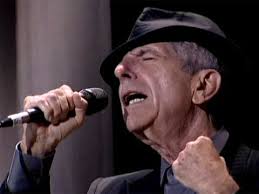 Leonard Cohen singing his “Hallelujah”
Leonard Cohen singing his “Hallelujah”
(On Youtube, Cohn’s is there in several renditions, but the Shrek version is by others.)
The highest expressions in the arts are not just there for those who directly experience them. The entire field from best to worst gains from what’s highest. It’s clear in every art that perceptions and innovations at the top are absorbed by other lesser practitioners and put into effect in their own, more easily understood forms, and are appreciated on a less sophisticated level at the width and breath of art–from the junk-food bottom all the way up.
From Stan Brakhage (Dog Star Man
or from another similar work by him, 1962)
–maybe a fifth-of-a-second frame
Example: I used to attend avant-garde (“underground”) films in Greenwich Village in the early 1960s. A technique used to express and convey visual information and feeling in some of those films was exceedingly fast cutting from one image to another–maybe 5 or 6 images a second or more. The technique got around and affected millions who never saw Stan Brakage’s Dog Star Man, 1962, or anything else by him or others in little makeshift movie houses in the East Village in the 60s. Soon that technique (with all its speed-up of input and audience’s growing ability to absorb it and be emotionally enraptured by it) became a fad in television commercials. And subsequently it could be seen in mass-market commercial movies, such as in the finale of the Warren Beatty/Faye Dunaway film, Bonnie And Clyde, 1967. The quick cuts work well to express the violence of bullets hitting bodies.
Warren Beatty and Faye Dunnaway, 1967
(or dead body-doubles)
! ! !
Don’t deny and kill the best we humans can potentially attain—let it remain as a sometimes-achieved enjoyment, and when we can’t understand or even believe in it or we turn our backs to it–leave it out there in the world. As Don Quixote quixotically sang in “Man of La Mancha”: we can strive for it—as THE IMPOSSIBLE DREAM!
! ! !
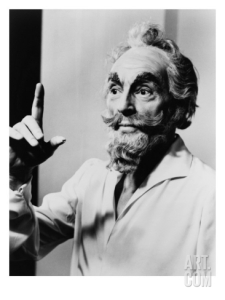 George Balanchine as Don Quixote
George Balanchine as Don Quixote
in his ballet of that name.
He dreamed and achieved his dreams.
! ! !
Jean Shepherd’s radio work, for decades, achieved the level of Maslow’s “Self Actualization.” His portrayal of a mind exploring (“questing” maybe?), finding, suggesting, raises our level of humanness, and thus affects our psyches in a form that will not go away. Over the years we pass it on to others in our everyday interactions. Our “excelsiors,” our impossible dreams, sometimes encounter holy grails and advance our sensibilities.
(Photo: Fred W. McDarrah)
Jean Shepherd at the heights.
Excelsiors and impossible dreams coming true
as he performs his artistic essence.
From his voice to our understanding.
Whether we realize it or not.
! ! !
_____________________________________________

